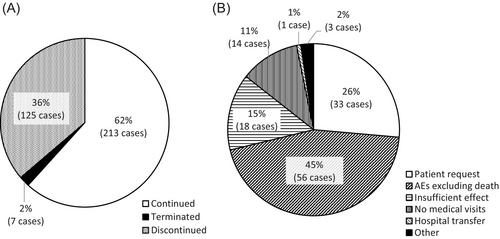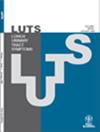Long-term safety of desmopressin orally disintegrating tablets in men with nocturia due to nocturnal polyuria: Interim results of a specified drug use–results survey in Japan
Abstract
Objectives
This interim report presents the 12-week results of a post-marketing surveillance evaluating the safety of desmopressin orally disintegrating tablets 25 and 50 μg in Japanese men with nocturia due to nocturnal polyuria.
Methods
Of the planned study population of 1000 Japanese men receiving desmopressin for the first time for nocturia due to nocturnal polyuria, 971 cases were enrolled. In this interim analysis, 9 cases, including 6 registry violations and 3 cases of unconfirmed desmopressin dosing, were excluded from the 354 case report forms collected and fixed by the end of December 2021, and data up to 12 weeks after administration in 345 cases were defined as the safety analysis set.
Results
The mean age was 74.5 ± 9.9 years and 88.7% of the survey participants were aged ≥65 years. Desmopressin was started at a dose of 25 μg in 153 cases (44.3%). There were 102 adverse drug reactions (ADRs) reported in 71 cases, including 6 serious ADRs in 3 cases (0.9%). The most common ADR was hyponatremia occurring in 29 cases (8.4%). Eight of the hyponatremic cases were asymptomatic. Symptoms were resolved or slightly improved within 4 weeks of onset in 13 of 29 cases of hyponatremia. In addition, hyponatremia occurred in 11 of 217 cases (5.1%), with a serum sodium level before the administration of desmopressin of ≥140 mmol/L, and in 13 of 87 cases (14.9%), with a level of 135–139 mmol/L, and was not measured in 5 hyponatremia cases. Patient characteristics that showed significant differences in the occurrence of hyponatremia included body weight, body mass index, renal function, and pretreatment serum sodium level. Regular monitoring of serum sodium is necessary for early detection of hyponatremia.
Conclusions
Hyponatremia was the most common ADR when desmopressin orally disintegrating tablets were used to treat nocturia due to nocturnal polyuria over a 12-week period.


 求助内容:
求助内容: 应助结果提醒方式:
应助结果提醒方式:


